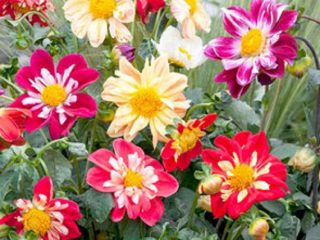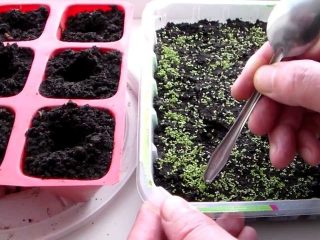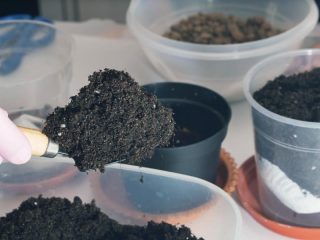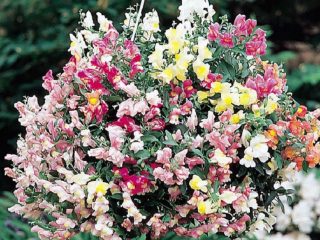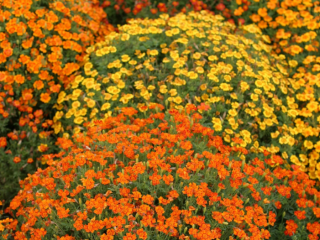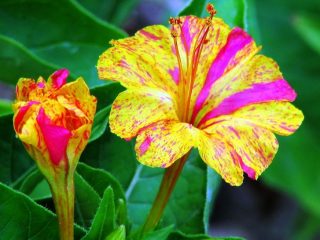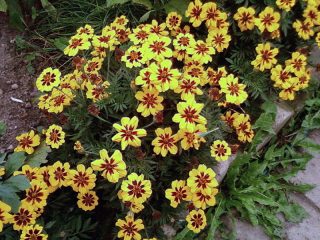Content
The amazingly beautiful plant eustoma is not without reason called the “queen of bouquets.” Graceful buds, compact bushes with dark green leaves, a long flowering period - all this makes the ornamental crop desirable in any home and garden. The plant is suitable for growing in pots, which allows you to decorate the interior of a room, veranda or garden gazebo. Propagation of eustoma by cuttings at home is a complex and labor-intensive process.

Tall varieties of eustoma are intended for cultivation on the site, dwarf varieties are intended for cultivation indoors
Does eustoma take cuttings?
Eustoma (lisianthus, Irish rose) is a beautiful plant with flowers that seem to be made of the most delicate silk. Plantings of decorative crops delight the eye with a wide palette of colors and rare durability. The crop grown both at home, in greenhouses, and in gardens requires special care. Many flower lovers dream of having a wonderful plant, but it takes root only among those who are ready to create and constantly maintain conditions that are comfortable for eustoma.
The main method of propagation of ornamental crops is sowing.Vegetative methods for producing new flowers are rarely used. The fact is that rooting eustoma cuttings at home is quite difficult. To carry out agrotechnical procedures the following is required:
- special tool;
- equipment for creating conditions for cultivation.
In addition, when growing eustoma from cuttings, you must have certain skills in floriculture.
When can you cut eustoma?
During vegetative propagation of eustoma, a flowering twig is selected and cut off in July. The method is similar to cuttings from other plants. It is possible to propagate eustoma at home in the spring by separating the branches from the stem.
Growing eustoma from cuttings at home
Many gardeners try to propagate eustoma from cuttings. However, not everyone succeeds in obtaining a plant by vegetative means. For successful cuttings, agrotechnical recommendations should be strictly followed.

Unlike many plants, the apical parts of the branches are also suitable for cutting eustoma
Preparing the cuttings
From one eustoma branch you can get 2-5 cuttings. The process of harvesting planting material includes a number of simple operations:
- Remove the buds and lower leaves, as they are susceptible to rotting. The branch is shortened or divided into cuttings; for this, a part limited by two internodes is sufficient.
- The lower cut of the stem is dipped in dry Kornevin.
- The cuttings are placed in a small jar of settled water.
It is important that the liquid covers 1/3 of the cutting.The water in the container is regularly changed to fresh, it is advisable to do this every 6-8 hours.

Callus appears on the shoot after 5-7 days, roots begin to form after two weeks
Rooting eustoma cuttings
After the roots have formed, the eustoma cuttings can be rooted. For cultivation, you should prepare a nutritious, loose substrate. The optimal soil composition is:
- fertile land;
- peat;
- a little sand and perlite.
Ready-made soil intended for growing Saintpaulias is also suitable. The best option is peat pots, which can later be moved to an open area or placed in a flowerpot for cultivation at home. Moisten the soil with water at room temperature with the addition of Fitosporin for disinfection.
Planting a rooted cutting
Transplantation of cuttings with formed roots should be carried out extremely carefully. When transferring to open ground, the procedure is planned, making sure that there will be no more frosts. For planting, choose a place sheltered from drafts. Strong but diffuse lighting of the area is necessary.
It is better to plant eustoma in cloudy, warm weather. A sufficient volume of water is poured into the hole and the seedling is placed there along with a peat pot. It is necessary to maintain a distance of 15-25 cm between specimens, since the plant bushes heavily.
For 2-3 weeks, eustoma sprouts are kept under glass jars. During this period, watering the flowers is stopped. After seven leaves appear, pinch off the top. The procedure is aimed at enhancing branching. A month later, the plant is fed with a mineral composition.

The soil in pots with eustoma should always be moderately moist
Conclusion
Propagating eustoma by cuttings at home is a labor-intensive process and not always effective. Luxurious flowers are easier to propagate from seeds. Compliance with the rules of agricultural technology during planting and the creation of conditions comfortable for the ornamental crop is a guarantee that the capricious plant will take root and delight with bright buds.



